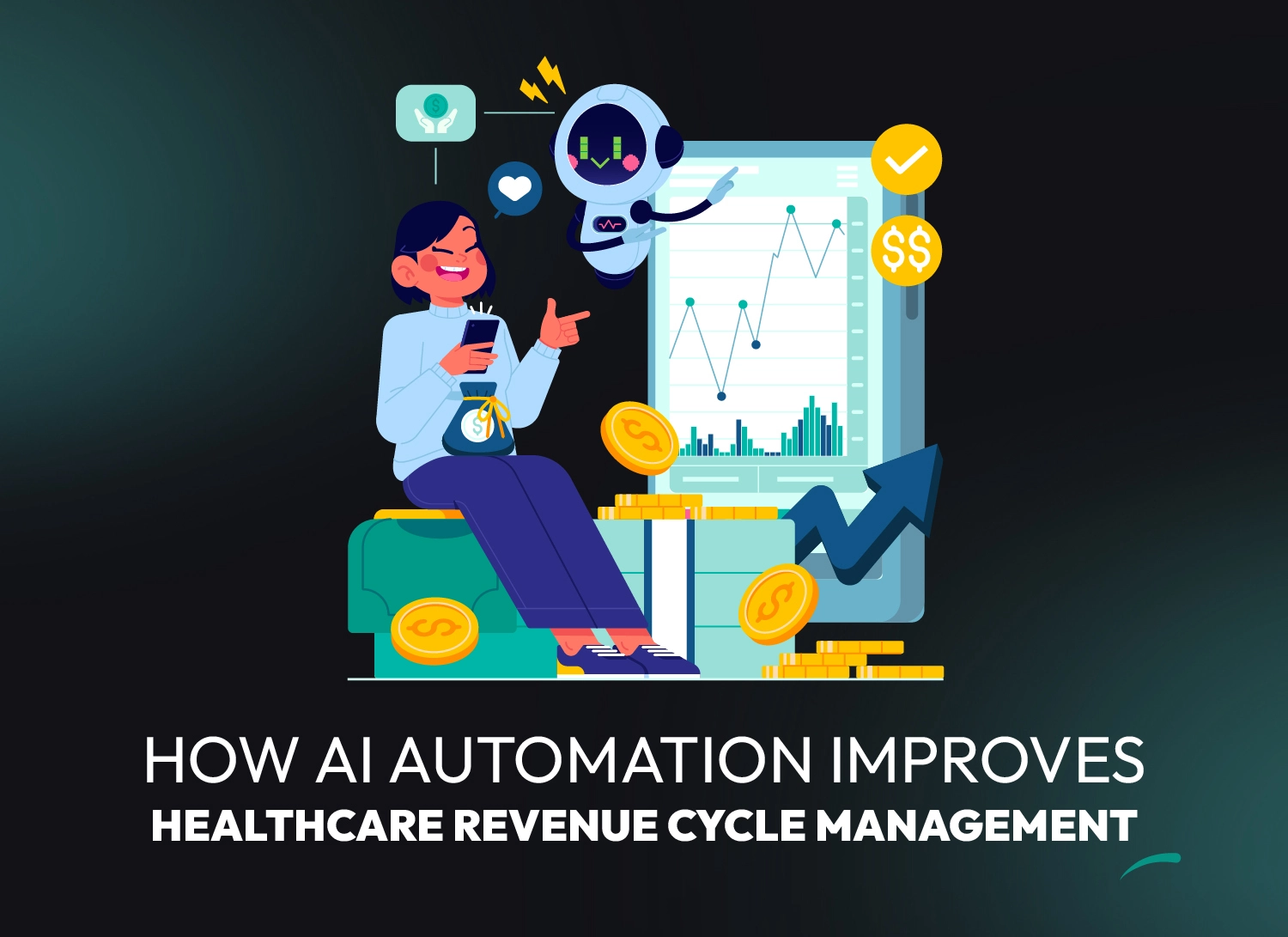
AI & Automation in Medical Billing
The Future of Healthcare Finance: Exploring AI Medical Billing and Automation in Healthcare Revenue Cycle Trends
Introduction: AI in Healthcare Billing
Imagine walking into your doctor’s office and knowing that your billing won’t cause hours of stress afterward. That peace of mind? That’s the power of AI medical billing. Gone are the times of administrative chaos, rejections, and countless follow-ups. Instead, we’ve stepped into an era wherein automated medical billing software programs work quietly behind the curtain, making sure claims are accurate, compliant, and submitted on time.
Why AI Medical Billing is Gaining Popularity {#why-ai-medical-billing-popular}
It’s not just hype. Across the healthcare industry, providers are turning to AI medical billing and AI billing solutions for healthcare because the alternative—manual processes—is costly in time, money, and stress. Coding mistakes happen, appeals get lost, and reimbursements are delayed. With AI in place, those errors plummet. Claims are verified in real-time, and mistakes are flagged before submission.
Plus, AI medical billing systems get smarter over time. Machine learning helps them learn from denied claims, payer rules, and evolving documentation practices. Over time, what started as automation evolves into clued-in, proactive financial intelligence.
Benefits of AI Billing Solutions Healthcare Providers Rely On
There’s a reason providers are excited:
-
Rapid turnaround: Claims move out faster than ever, shrinking billing cycles by weeks.
-
Fewer denials: Predictive insights flag issues before they happen.
-
Stress reduction: Staff moves from grunt work to analysis and patient care.
-
Scalability: Adding providers or locations doesn’t mean multiplying your workload.
-
Compliance peace of mind: easier audits, fewer fines.
Understanding Automated Medical Billing Software
Core Features of Medical Billing Software with AI
Think of automated medical billing software like a supercharged team that works 24/7. Here’s what sets it apart:
-
Claim creation & scrubbing—based on documentation and payer rules.
-
Smart denial prevention—AI automatically corrects forms before submission.
-
AI coding medical billing—NLP scans charts and applies accurate ICD‑10/CPT codes.
-
Predictive analytics—forecasts revenue, alerts to cash-flow dips.
-
Real-time eligibility checks—before services even start.
The Shift Toward Smart Medical Billing Tools {#shift-smart-tools}
No more scattered tools. A smart medical billing tools ecosystem combines documentation, billing, and analytics into one unified workspace. It flags issues, learns payer quirks, provides dashboards, and even sends friendly reminders to patients. The goal? Zero surprises and total clarity—for both providers and payers.
The Rise of Medical Billing Automation
When we talk about medical billing automation, we’re exploring a transformation. No longer is billing a necessary chore—it’s a strategic advantage with automation in healthcare revenue cycle taking center stage.
Key Drivers Behind Healthcare Billing Automation Trends
The push is real.
-
The healthcare sector is shifting to digital.
-
Regulations grow more complex every day.
-
Skilled billing professionals are in short supply.
-
Patient expectations align with modern transparency.
Automated systems are the antidote—they follow every new rule instantly, require less oversight, and deliver clarity across the cycle.
Role of AI Coding Medical Billing in Efficiency
Coding errors are billing’s nemesis. With AI coding medical billing, errors diminish. Imagine a system that reads doctors’ unstructured notes and instantly assigns codes. No more guessing or costly data entry mistakes. Accuracy skyrockets. Denials drop. Reimbursable claims soar.
Robotic Process Automation in Medical Billing
How Robotic Process Automation Medical Billing Works
Here’s where automation gets robotic… but in a good way. Robotic process automation medical billing clones the tasks humans did—logging into portals, transferring data, and updating spreadsheets—without ever sleeping or slowing down.
How RPA Complements AI Medical Claims Management
This is synergy:
-
AI figures out what’s wrong with a claim.
-
RPA fixes it and resubmits.
-
The combo handles eligibility checks, denied-claim fixes, and appeal packaging without manual steps.
Use Cases in Real-World Hospital Environments
Real hospitals are already winning:
-
Eligibility bots verify coverage before appointments.
-
Claim bots flag and correct payer issues.
-
Appeal bots resubmit within minutes.
-
Hospitals report 45% fewer denials and 60% faster reimbursements.
AI Revenue Cycle Management (RCM)
Automation in Healthcare Revenue Cycle {#automation-revenue-cycle}
RCM is the financial lifeline. AI revenue cycle management ties together registration, care documentation, billing, collections, and analytics into a single intelligent flow.
Benefits for Clinics, Hospitals, and Billing Teams
-
Downtime <!-- --> slash in days‑in‑AR.
-
Lower staffing costs with bots handling grunt tasks.
-
Clarity in billing: patients are billed accurately and swiftly.
-
Audit readiness: every action is traceable.
-
Trust from patients who don’t face mysterious charges.
AI Healthcare Claims Processing
Processing a claim is no longer a waiting game. AI healthcare claims processing means real-time actions:
-
Coverage is checked pre-visit.
-
Codes are smartly applied.
-
Claims are scrubbed and submitted.
-
Denials trigger expedited appeals.
-
Payments are reconciled automatically.
How AI Transforms Claims from Start to Finish
From check-in through payment, AI weeds out errors, expedites resolution, and tracks performance throughout the cycle. Imagine proactive alerts when something’s odd about a claim—it means fewer delays and less manual chasing.
AI’s Role in Reducing Denials and Improving Accuracy
By analyzing masses of heaps of transactions, AI spots styles—like a payer denying a sure system code. Instead of letting it happen again, the gadget flags it, corrects it, or searches for options. Clinics using this document have up to eighty percent fewer denials and ninety percent coding accuracy.
Future of Medical Billing Automation
Looking ahead, the future of medical billing automation is thrilling:
-
Generative AI will draft charts and billing logs from audio or chat.
-
Blockchain integration may secure payer-provider ledgers.
-
Conversational AI will handle patient billing questions in real time.
-
Predictive analytics will suggest ideal billing cycles based on patient mix.
Emerging Technologies to Watch
-
Generative AI for documentation—absence of manual note writing.
-
Blockchain—unhackable claim trails.
-
Conversational AI—billing concierge via chat or voice.
-
Predictive analytics—financial foresight for smarter behavior.
The Competitive Advantage of Early Adoption
Early adopters won’t just survive—they’ll thrive. Expect:
-
Faster scaling.
-
Healthier margin growth.
-
Staff who feel valued and less burdened.
-
Stakeholder confidence at higher levels.
-
Patient satisfaction for clear, predictable billing.
Conclusion
The combination of AI medical billing, automated medical billing software, medical billing automation, AI billing solutions for healthcare, robotic process automation for medical billing, AI revenue cycle management, automation in healthcare revenue cycle, medical billing software with AI, AI coding for medical billing, smart medical billing tools, AI healthcare claims processing, the future of medical billing automation, and AI medical claims management isn’t sci-fi—it’s here. And it's reshaping healthcare finance from the inside out.
Providers who embrace these technologies are seeing fewer errors, faster payments, more predictable cash flow, and happier staff and patients. The strategic advantage? Unmatched.
Embrace the transformation now, and you’ll own your financial future.
FAQs
What exactly is AI medical billing?
It uses artificial intelligence and machine learning to automate tasks—coding, claim creation, error checking, and follow-up—bringing speed and precision to billing.
How do smart medical billing tools improve accuracy?
They learn payer patterns, scan documentation via NLP, and preemptively flag issues before claims go out—meaning fewer errors and faster reimbursements.
How does robotic process automation medical billing work with AI?
AI identifies errors. RPA fixes them—including data entry or portal updates—and resubmits without manual intervention. It’s a full automation loop.
Can medical billing software with AI reduce staffing needs?
Yes—automating routine tasks lets small teams handle high volumes efficiently, reallocating staff to strategic roles like denial follow-up and analytics.
What is the future of medical billing automation?
Expect generative documentation, blockchain trails, AI-powered patient billing assistants, and predictive-looking analytics. The next chapters of automation are only starting.





